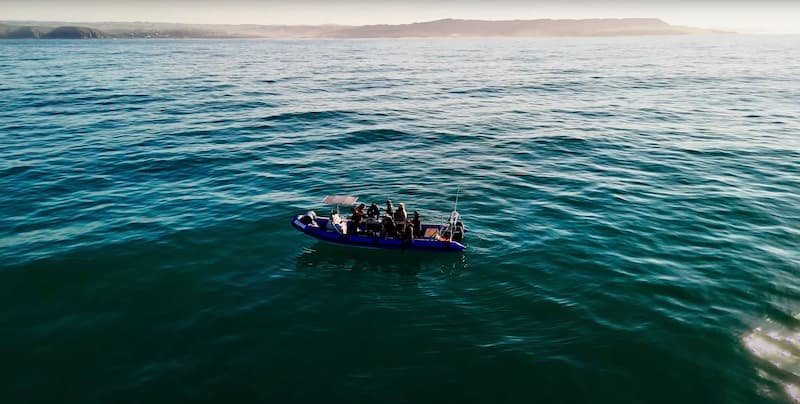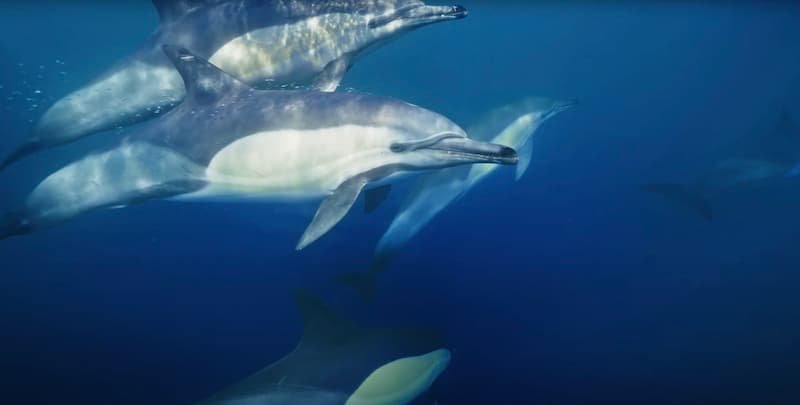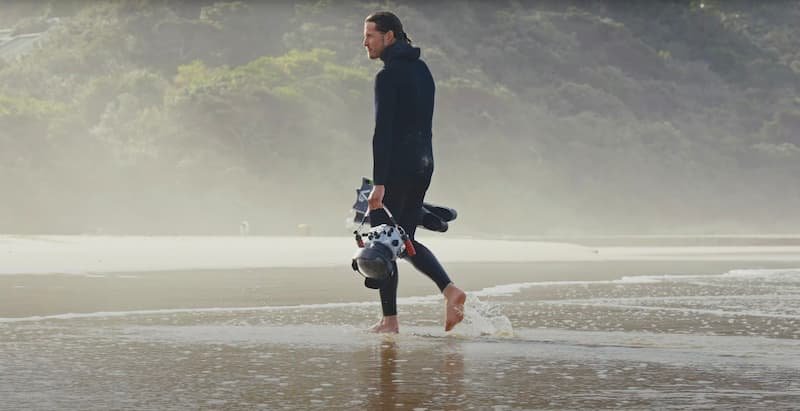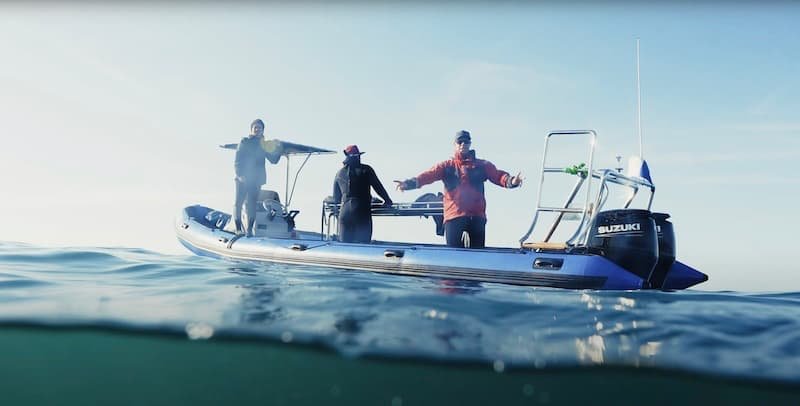
 Olivia Møller
Freediver - Activist - Explorer
Olivia Møller
Freediver - Activist - Explorer

 Olivia Møller
Freediver - Activist - Explorer
Olivia Møller
Freediver - Activist - Explorer
The South African Sardine Run is one of the most awe-inspiring natural spectacles on the planet, an event often compared to the Great Wildebeest Migration in East Africa, but taking place in the oceans. Every year, between May and July, billions of sardines, specifically the species Sardinops sagax migrate along the southeastern coast of South Africa, moving from the cold waters of the Agulhas Bank toward the warmer waters of KwaZulu-Natal. This seemingly simple migration of small fish triggers a massive congregation of marine predators and aerial hunters, creating a feeding frenzy that attracts not only wildlife but also divers, snorkelers, photographers, and scientists from across the globe.
The sheer scale of the Sardine Run is difficult to comprehend. Shoals of sardines can stretch for over 15 kilometers in length, 3.5 kilometers in width, and plunge as deep as 30 meters. From the perspective of a diver underwater or someone looking from a boat, these enormous schools of silver fish create a shimmering, undulating spectacle, moving as one organism in response to environmental changes, and of course, the looming presence of predators. For the sardines, this migration is a matter of survival, but their journey creates an unintentional invitation to some of the ocean's most fearsome and agile hunters.

Image by Jacques De Vos / Ikelite
The migration is driven by a combination of oceanic and atmospheric factors. The cooler waters off the southern coast of South Africa, particularly around the Agulhas Bank, are rich in nutrients due to upwellings that occur when deep, cold water rises to the surface. These nutrient-rich waters provide ideal conditions for plankton, which sardines feed on. As winter sets in, the sardines follow the cold currents and move northward, hugging the coastline. The water temperature must be just right, typically below 21 degrees Celsius, for the sardines to thrive. If the water becomes too warm, the sardines might not even appear, making the phenomenon elusive and difficult to predict.

Image by Jacques De Vos / Ikelite
The Sardine Run is not just about the movement of sardines but also about the complex interactions between them and a variety of predators. The vast numbers of sardines attract a dazzling array of marine creatures that descend upon the shoals in spectacular displays of hunting prowess. Among the predators are dolphins, sharks, seals, whales, and numerous species of seabirds, all drawn by the opportunity to feast on the sardines in what can only be described as a feeding frenzy.
Dolphins are often the first to appear, using their high intelligence and sophisticated hunting techniques to exploit the dense shoals of sardines. Working in pods, they use echolocation to herd the sardines into tightly packed balls known as "bait balls." These bait balls can be as small as a few meters in diameter, but even on that scale, they contain thousands of sardines. Once the bait ball is formed, the dolphins, often joined by other predators, take turns diving into the ball, snatching up fish in a chaotic but highly effective feeding process.

Image by Jacques De Vos / Ikelite
The bait balls also attract sharks, including bronze whaler sharks, dusky sharks, and blacktip sharks, among others. These sharks are attracted to the vibrations and chemical cues in the water, which signal the presence of prey. Their sleek bodies and sharp teeth make them well-equipped for hunting sardines, and they join the frenzy with remarkable speed and agility. As dolphins dart into the bait balls from one angle, sharks attack from another, adding to the sense of an underwater battlefield.
Seals are also regular participants in the Sardine Run, particularly the Cape fur seal, which uses its speed and agility to catch sardines as they flee from other predators. While seals are usually seen lounging on rocks and coastal shores, in the water, they are nimble hunters capable of outmaneuvering their prey with ease. They add a mammalian dimension to this aquatic spectacle, showcasing the variety of life that depends on the sardines' migration.
Whales, particularly Bryde's whales, are perhaps the most dramatic participants in the Sardine Run. These massive creatures are filter feeders, opening their huge mouths to engulf entire shoals of sardines in one go. While sharks and dolphins dart in and out of the bait balls, picking off individual fish, Bryde's whales take a different approach, engulfing large portions of the shoals in a single movement. The sight of a whale lunging through the water with its mouth wide open, swallowing thousands of sardines in a single gulp, is one of the most spectacular sights of the Sardine Run.

Image by Jacques De Vos / Ikelite
Above the surface, the air is filled with the activity of seabirds, particularly Cape gannets. These birds are experts at aerial hunting, diving from heights of up to 30 meters to plunge into the water at speeds of over 100 kilometers per hour. Their sharp beaks and keen eyesight allow them to pierce through the water and snatch sardines before they have a chance to escape. Watching the gannets dive-bomb into the ocean, their white wings outstretched before they disappear into the water, is another incredible feature of the Sardine Run. The birds often dive in synchrony, creating a dramatic visual display that adds another layer of intensity to the already chaotic scene.
All of this action, both above and below the surface, has made the Sardine Run a major attraction for wildlife enthusiasts, particularly divers. Scuba divers and snorkelers from around the world come to South Africa to experience the event firsthand. For those lucky enough to be in the water during a Sardine Run, the experience is like no other. Imagine diving into the ocean and finding yourself surrounded by thousands of shimmering sardines, their movements choreographed by the presence of predators. Suddenly, a dolphin rushes past you, followed by a shark, both locked in a hunt for the same prey. Above, the shadow of a whale passes by, while the air above the water is alive with diving seabirds. It is a sensory overload of life and death, action and energy, all playing out in real-time.
Alchemy's long-time partner, Jacques De Vos, organizes Sardine Run tours that are not only incredibly well-organized but also prioritize safety and ethical practices. His tours offer a unique opportunity to experience this natural wonder in a responsible and environmentally conscious way.

Image by Jacques De Vos / Ikelite
The Sardine Run is also of great scientific interest. Marine biologists and ecologists study the phenomenon to learn more about the behaviors of both the sardines and their predators. The event provides insight into predator-prey relationships, migration patterns, and the broader health of the marine ecosystem in this region of the Indian Ocean. The Sardine Run’s timing, scale, and the variety of species it involves make it a unique opportunity to study how marine ecosystems function on a grand scale.
However, despite its spectacle, the Sardine Run is not guaranteed to occur every year with the same intensity. Various factors, such as changes in water temperature, ocean currents, and even fishing practices, can affect the migration. In years when water temperatures along the coast are too warm, the sardines may remain in deeper waters, making the run less visible from the shore or accessible to divers. Overfishing and climate change are also concerns that could impact the future of the Sardine Run. Although the event has been taking place for millennia, the delicate balance of ocean conditions required to sustain such a migration may become increasingly threatened by human activity.

Image by Jacques De Vos / Ikelite
In recent years, the Sardine Run has also become an important part of South Africa’s ecotourism industry. Tour operators offer specialized diving tours that allow visitors to witness the migration up close, and coastal towns such as Durban, Port St. Johns, and East London have become hotspots for tourists hoping to catch a glimpse of the action. The economic impact of the Sardine Run on these areas is significant, as it brings in revenue from visitors eager to experience the phenomenon and support local businesses. For many, the Sardine Run is not just an opportunity to see marine wildlife but to connect with nature in a profound way, gaining a greater appreciation for the complexity and beauty of the ocean's ecosystems.
The Sardine Run along South Africa's coast is one of the most remarkable natural events on Earth. It is a dynamic, multi-layered spectacle that showcases the intricate relationships between different marine species, all driven by the migration of billions of sardines. From the ocean depths where dolphins, sharks, and whales compete for their share of the feast, to the skies above where seabirds dive in perfect synchrony, the Sardine Run offers a rare glimpse into the raw power and beauty of nature. It is a reminder of the interconnectedness of life on Earth, the fragile balance of ecosystems, and the breathtaking wonders that the natural world has to offer.